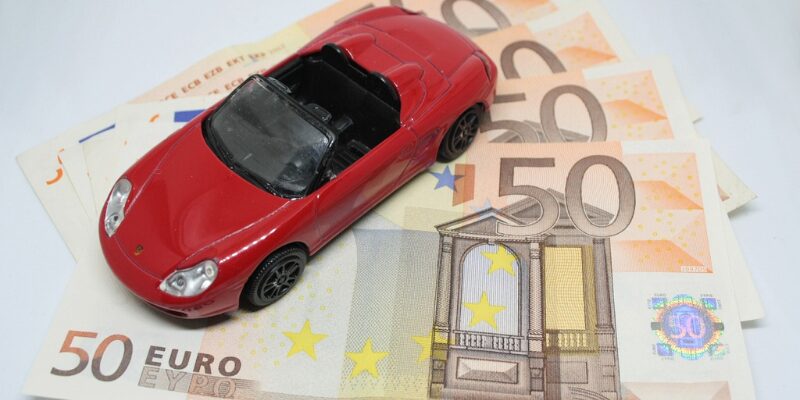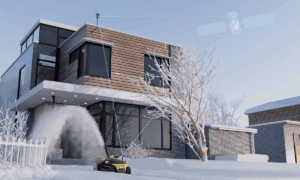The world of auto insurance is undergoing a remarkable transformation. Traditionally, car insurance premiums were based on broad factors like age, gender, location, and vehicle type. However, advancements in technology are reshaping this landscape, making it more personalized and fair. Enter telematics-based auto insurance an innovative approach that uses technology to assess individual driving habits and tailor insurance premiums accordingly.
But what is telematics, and why is it revolutionizing the auto insurance industry? Let’s explore the concept, how it works, and why it’s gaining traction among drivers and insurers alike.
What is Telematics-Based Auto Insurance?
Telematics-based auto insurance leverages a small device or app to monitor your driving habits in real time. These devices, often called telematics devices or black boxes, collect data about your driving behavior, such as:
- Speed: How fast you drive.
- Braking habits: How often and how hard you brake.
- Mileage: How far and how often you drive.
- Time of travel: Whether you drive during risky times, like late at night.
- Cornering: How sharply you turn.
This data is then analyzed to create a risk profile. If you demonstrate safe driving habits, you’re rewarded with lower insurance premiums. Essentially, telematics shifts the focus from demographic assumptions to actual driving behavior.
How Does Telematics Work?
Telematics systems are powered by a combination of GPS, sensors, and wireless communication. Here’s a step-by-step breakdown:
Installation of a Device or App
You either install a telematics device in your car or download a mobile app provided by your insurer.
Data Collection
The device or app records driving data and transmits it to your insurance provider.
Analysis of Driving Behavior
The insurer analyzes the data to assess your driving style and calculate risk.
Personalized Premiums
Based on the analysis, your insurance premium is adjusted. Safe drivers often enjoy lower rates.
This system promotes transparency by linking premiums directly to driving habits.
Benefits of Telematics-Based Auto Insurance
Telematics is not just a win for insurers; it’s a game-changer for drivers too. Here’s why:
Fairer Premiums
Telematics ensures that you pay for how you drive, not who you are. This is especially beneficial for younger drivers, who often face high premiums simply due to their age. If you’re a careful driver, telematics can prove it and help you save money.
Encourages Safer Driving
Knowing that your driving habits are being monitored can encourage better behavior on the road. Drivers tend to be more cautious, which reduces the likelihood of accidents. This makes roads safer for everyone.
Cost Savings
Good driving habits can lead to significant savings on premiums. For those who don’t drive often, low-mileage discounts can also apply.
Real-Time Feedback
Many telematics systems provide real-time feedback, helping drivers understand and improve their habits.
Enhanced Theft Protection
Telematics devices often include GPS tracking, making it easier to locate a stolen vehicle.
Challenges of Telematics-Based Insurance
While the benefits are substantial, there are also challenges:
Privacy Concerns
Some drivers may be uncomfortable with the idea of their driving being constantly monitored. Transparency from insurers about how data is used can help address this.
Limited Discounts for Risky Drivers
Drivers with less-than-ideal habits may not see immediate cost benefits and could even face higher premiums.
Technical Issues
Malfunctions in devices or apps could lead to inaccurate data collection, affecting premiums.
Accessibility
Not all insurers offer telematics-based policies yet, limiting options in certain regions.
Who Should Consider Telematics-Based Insurance?
Telematics isn’t for everyone, but it’s ideal for:
Safe Drivers: If you have a clean driving record, you can save significantly.
Infrequent Drivers: Those who drive less often can benefit from pay-as-you-go models.
Young Drivers: It provides a way to prove safe driving habits and reduce traditionally high premiums.
Tech Enthusiasts: If you enjoy leveraging technology to optimize costs, telematics might appeal to you.
The Future of Telematics in Auto Insurance
As technology evolves, telematics is likely to become more sophisticated and widespread. Here are some trends to watch:
Integration with Smart Cars
With the rise of smart cars, telematics devices could eventually become redundant. In-built systems may directly transmit driving data to insurers.
Artificial Intelligence (AI)
AI could enhance the analysis of telematics data, providing more nuanced insights into driving habits.
Broader Adoption
As awareness grows and costs decrease, more insurers are expected to offer telematics-based policies.
Expanded Use Cases
Telematics could extend beyond pricing, helping drivers negotiate lower rates for car loans or assess wear-and-tear on their vehicles.
Is Telematics-Based Insurance Right for You?
The decision to opt for telematics-based insurance depends on your driving habits, budget, and comfort with technology. If you’re a cautious driver looking for a fairer deal, it’s worth considering. However, if you frequently drive at odd hours or have unpredictable driving habits, it might not yield immediate savings.
Telematics-based insurance represents a shift towards more personalized and data-driven solutions. It aligns with the broader trend of technology transforming traditional industries, making them more efficient and customer-focused.
Conclusion
Telematics-based auto insurance is a groundbreaking concept that puts drivers in control of their premiums. By rewarding safe and mindful driving, it fosters a culture of accountability and fairness on the roads. Whether you’re a tech-savvy individual eager to embrace innovation or a careful driver seeking better deals, telematics offers an exciting glimpse into the future of auto insurance.
As adoption continues to grow, it’s clear that telematics is more than a trend it’s the future of driving.



































